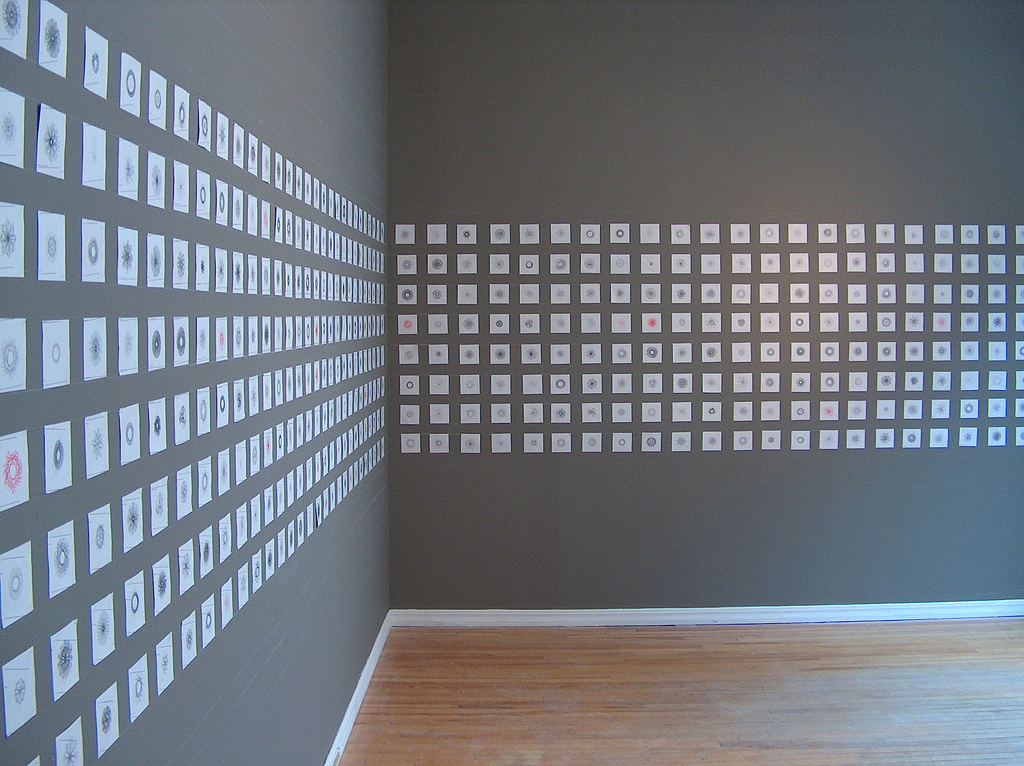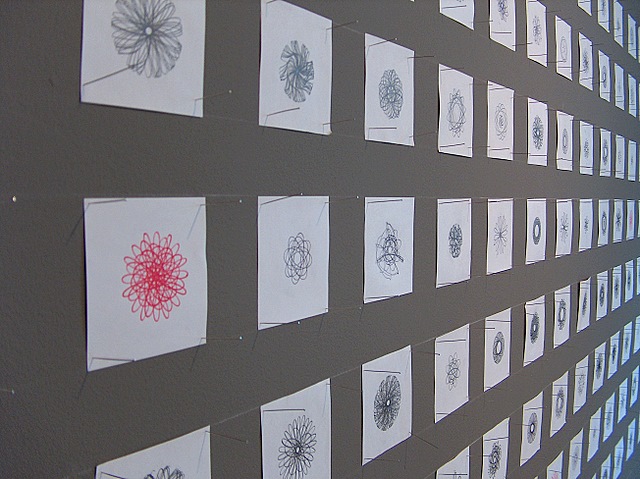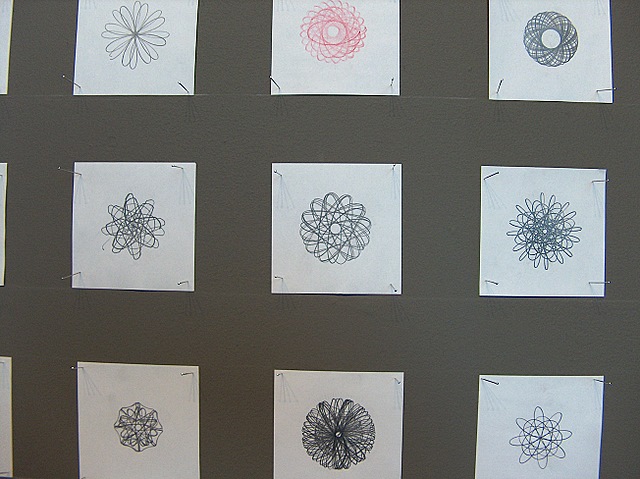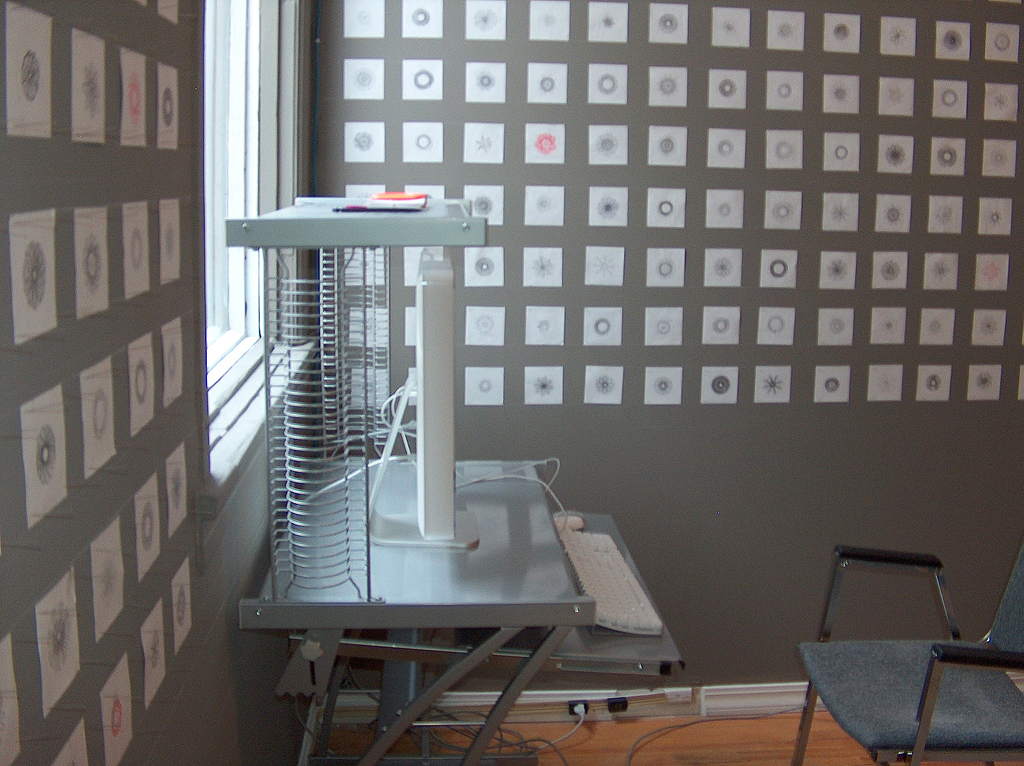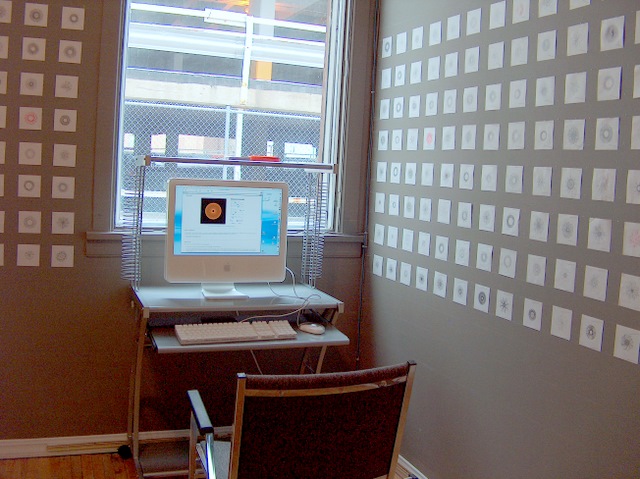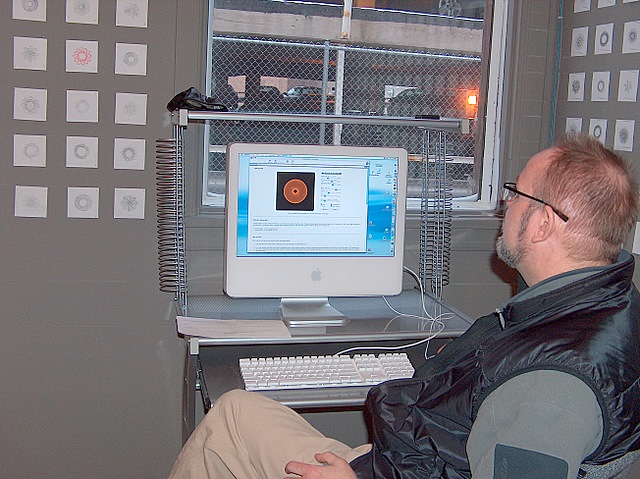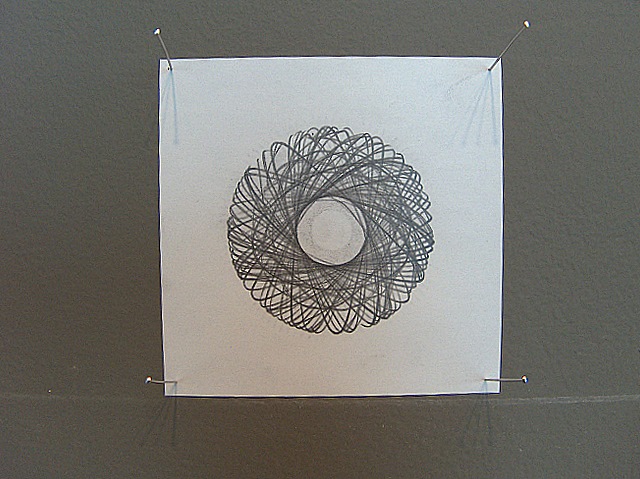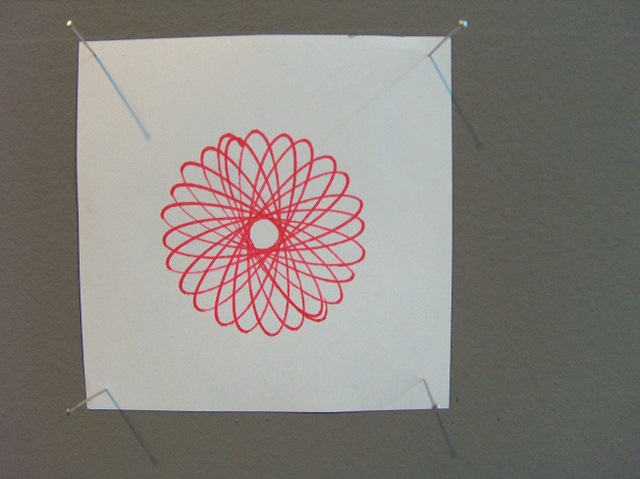In-Spiral project
In-spiral was an investigation into phenomenology and the lived bodily experience. A hand toy and the computer were utilized to produce drawings of hypocycloids. The walls are filled with hundreds of hypocycloids that I and visitors drew using the hand toy.
The curved form of a spiral holds aesthetic appeal and is associated with both the natural world and the cosmos, ranging from microcosms to macrocosms, such as flower heads and planetary trajectories. It exemplifies poetic geometry. This hand tool utilizes principles of mathematics and geometry, employing two circles of differing radii to generate a hypocycloid, which is the curve produced by a fixed point on the circumference of a small circle rolling within a larger circle. Mathematical and geometric principles evoke an aspiration for perfection, with geometry promising stasis, stability, and predictability. The construction of a spiral from a mathematical formula should ideally be flawless; as a geometric figure, it possesses measurable curves. This ideal of perfection is attainable through computer software. The formation of the spiral graph or hypocycloid is precisely determined by the radii of the circles, the points within the circles, and the number of rotations. However, in my experimentation with a hand-drawn spiral, this strict aesthetic standard diminishes, revealing the imperfection inherent in human execution. The purity of the form gives way to the influence of the creator's hand, subject to chance and limitations of dexterity. While computers can generate exact geometric constructions, it is the inherently unpredictable and variable nature of hand-drawn spirals that enables participants to engage more personally and repeatedly in the process. Each wobble and skid diminishes the geometric purity, yet the physicality of the process and the indeterminate outcome foster a deeper connection and engagement for participants.
